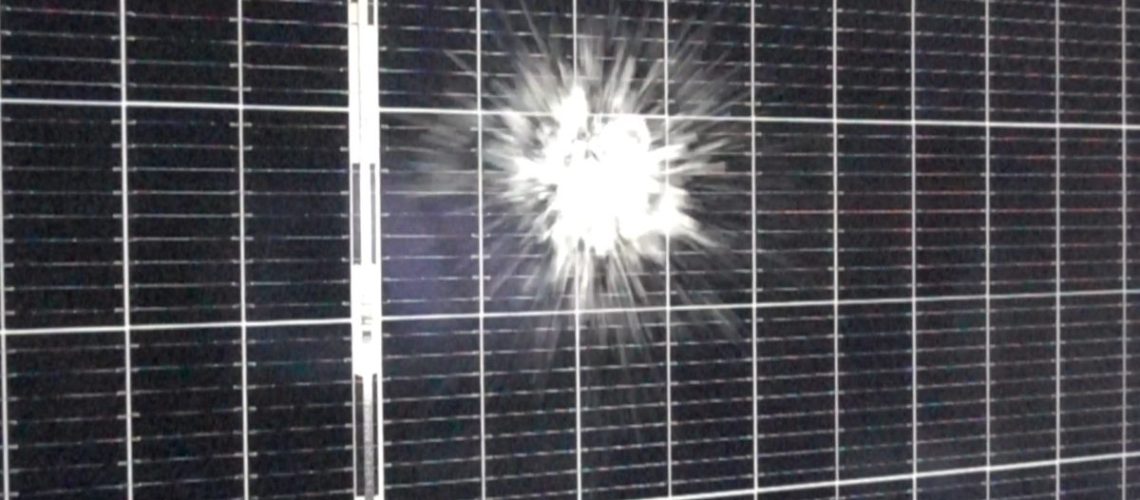Hail events have historically posed a considerable risk for utility solar projects, with weather instances creating up to $100 million in damages at large projects located in “Hail Alley” states such as Texas.
With the utility-scale solar market experiencing a multi-gigawatt surge of development activity across America’s heartland states, insurers are now requiring solar developers to demonstrate mitigation strategies and protocols to address severe hail and extreme weather in new solar states from the Midwest through the Great Plains, and elsewhere.
A recent pv magazine USA webinar session revealed that hail risk mitigation is a common problem in the “Hail Alley,” a broad region encompassing around six states from the Dakotas to Texas, which often experience five or more days each year of catastrophic hail. Climate change has created patterns of irregularity as extreme weather increasingly crops up in regions bordering hail-prone regions.
Hail events have historically posed a considerable risk for utility solar, with weather instances creating up to $100 million in module damage at large projects located in states like Texas, where hail stones the size of baseballs can pummel skyward facing modules.
Indji Systems, a Los Angeles-based meteorological software, has just launched the Indji Watch, a hail detection software-as-a-service platform specifically for solar developers which allows end users to see and trace hail events using a predictive, real-time data framework.
The software system allows solar and utility siting stakeholders to operations and maintenance professionals to implement effective defensive measures and safeguard their investments for the long haul.
Indji Watch automatically detects early threats and delivers notifications through its dashboard. With updates on potential hail threats delivered up to the time of storm impacts, the weather watch allows companies to proactively prepare for significant events, fostering collaboration and coordinated decision-making across the enterprise. By prioritizing “early awareness,” Indji Systems can help mitigate risk by protecting solar sites.
The Indji Watch identifies storm paths and their proximity to solar asset footprints as threats become imminent, enabling customers to take defensive measures. The warning allows solar O&M and onsite operators time to “stow,” a term used to angle the solar panels away from oncoming hailstorms to lessen the direct impact and potential damage to the crystalline panels.
The system provides weather alerts within one hour of impact. Indji Watch’s customizable thresholds also allow for alerts tailored to the specific panel technology deployed at each site.
“This new release further solidifies our position as the go-to solution for effective risk mitigation, and demonstrates our commitment to delivering unparalleled value to our customers,” said Adam Hender, chief executive officer of Indji Systems.
Founded in 2004, Indji Systems is an independent software company with operations in California and Australia. The company has designed the Indji Watch and GeoSamba mapping software which helps asset owners make real-time decisions about power and infrastructure assets.
The company received its first patent for Indji Watch in October 2018 for environmental threat monitoring and alert software. This covered the company’s cloud-based service with dynamic modeling of assets and hazards from sensor networks, the algorithms for threat relationships between weather pattern and end users, and real-time monitoring alerts.
The company’s weather tracking dashboard is used by utilities Xcel Energy, Sacramento Municipal Utility District, and Southern California Edison, while the Indji Watch has been also tested at a Longroad Energy utility solar site, according to its website.



